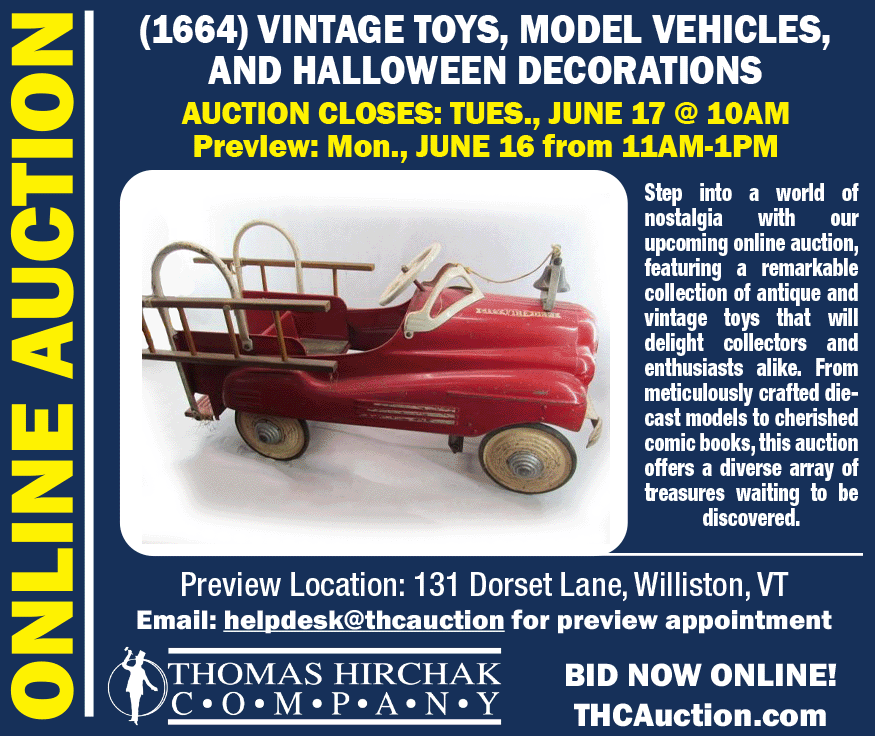Skinner Sells Folk & Decorative Arts on Event-Packed Last Sunday in October
October 27th, 2013
|
Jack O’Brien, on a telephone with Leigh Keno, took the mahogany Chippendale card table with a drawer and square-blocked ends, carved knees, and ball-and-claw feet for $57,000. Keno told us, “I believe it relates to a large group of classic Boston pieces made from the 1730’s to 1750’s. Boston makers shipped out pieces like that to other cities up and down the eastern seaboard. It’s very rare to find those large C-scrolls in conjunction with ball-and-webby-claw feet.”
This 22" x 27½" watercolor and gouache on paper Vermont farm scene, circa 1915, is executed in an unusual ruler-lined treatment. All that was known about the artist at the time the Skinner catalog appeared was that he/she worked in an area encompassing northern Vermont, upper New York state, and southern Quebec. This example sold to a phone bidder for $42,000. A companion piece (not shown), dated 1914, depicting a house by the railroad tracks, with railroad crossing notices written in both French and English, had a $8000/12,000 estimate and did not sell. Artist/dealer Joan Brownstein revealed that she has a third work in her inventory that is signed. Brownstein’s example depicts several buildings by railroad tracks, identified as “Buildings of Station/ S.S.&C. Junction/ J. McCambridge Agent/T Bonneau (drawer)[sic] Iberville PQ.” There were numerous T. Bonneaus in Iberville, Quebec, but the one who fits the years given is Treffle Bonneau, who is recorded in the Iberville census of 1901 as 18 years old. The railroad is the Stanstead, Sheffield & Chambly, organized in 1853, which ran through southern Quebec and into northern New England. It was taken over by Central Vermont in 1897 and acquired by Canadian National in 1923. For more information about the railroad, see The Canadian Railroad Historical Association, Inc., (CRHA) pamphlet no. 115, October 1960.
This paint-decorated dome-top box is attributed to the Lancaster County, Pennsylvania, artist known as the “Compasswork Decorator” of 1800-40. In a blue-green ground color and 13¼" long, it sold to a left bid of $21,600.
This crewel embroidered and needlework panel is a petticoat border, 8" high x 37½" long, of 18th-century origin. Rare? Skinner gave it an $8000/12,000 estimate, and bidders agreed. It sold to someone on line for $14,760.
This Federal secretary is confidently attributed to Boston’s extraordinary cabinetmaker Thomas Seymour because of similarities with other known Seymour pieces. Compare the reeded legs topped with decorative turned bosses, for example, with the legs of the cylinder-top desk/secretary shown on page 168 in Robert Mussey’s authoritative work The Furniture Masterworks of John & Thomas Seymour (2003). The églomisé painted glass windows are attributed to John Ritto Penniman. Dealer and consultant Clark Pearce took the lot for $120,000 and said he’d expected it to cost quite a bit more.
This 1660-80 Boston-made maple and oak low-back chair is an amazing survivor. As purchaser Clark Pearce said, “Almost all of these early chairs have lost their feet; this one hasn’t.” From the treasure-laden Charles P. Fisher estate of Framingham, Massachusetts, the chair cost Pearce $32,400. Hewett photo.
|
Boston, Massachusetts
Photos courtesy Skinner
When Skinner scheduled its big fall American furniture and decorative arts sale along with a single-owner folk art collection for October 27, 2013, there wasn’t much else scheduled for that date except the Ellis Boston Antiques Show.
Then other entities began announcing their autumn events. By the time October 27 arrived, there was a Northeast Auctions sale in Portsmouth, New Hampshire, and nine to ten other auctions up and down the eastern seaboard. And there was another big show, Frank Gaglio’s new Wilton Fall Antiques Market in Connecticut, with 100-plus exhibitors advertised.
In the past, splitting a dealer base among so many events could have killed an auction. Now, with left bids and Internet and telephone bidding possible, low attendance in a gallery salesroom doesn’t necessarily mean disaster.
At the halfway point of the sale only a handful of potential bidders were in the room. They were easily outnumbered by Skinner employees, most of whom were busy dialing up prospective bidders. Of the 649 lots in the sale, 144 did not sell, for a just over 22% buy-in rate. The lots that did not sell were a result not so much of absent bidders as of reserves that were too high.
Skinner printed a separate catalog for the folk art collection of an Ohio collector, the survivor of a collecting couple who had purchased most of their collection prior to 2006. They bought from top-end dealers in a period when folk art was super hot, and their items represented fine examples of carving, paint decoration, and surface.
Eleven of the 40 lots of folk art did not sell, but the piece chosen for the front cover of the catalog did quite well. That was a watercolor and gouache Vermont farm scene, executed on paper by a northern Vermont/Quebec area artist, that carried a $15,000/25,000 estimate. It sold to a determined phone bidder for $42,000 (with buyer’s premium).
That same phone bidder bought three more of the folk art lots, a fancy painted sewing box, probably a Pennsylvania-made object, for $5100; a carved wooden rooster weathervane for $19,200; and a painted cast zinc and copper sheep weathervane for $18,000.
The lot on the back cover of the catalog was a 25" long carved Boston bull terrier made by South Portland, Maine, decoy maker and lighthouse keeper Augustus “Gus” Wilson (1864-1950). It carried a $125,000/175,000 estimate. Executed by Skinner department director and auctioneer Stephen Fletcher, bidding stopped at $90,000, and the terrier failed to sell.
Among the items that did not sell in the Ohio folk art collection were a yellow-painted Pennsylvania hanging candle box with lid with an $8000/12,000 estimate that was bought in at the $4000 level and a painted and carved spread-wing upright standing bird with a $30,000/50,000 estimate that drew no interest.
Other items that did not sell were a bird tree sculpture with 13 painted birds and a $20,000/40,000 estimate that was bought in at the $10,000 level and the companion painting to the $42,000 Vermont farm scene, a scene of a house by the railroad tracks, which drew no interest at half of the $8000/12,000 estimate.
Among the winners in the folk art collection were a painted double-sided game board that sold to a phone bidder for $25,200, a rare small-size rearing horse weathervane with remnants of yellow paint that sold to a phone bidder for $36,000, a putty-grained pine lift-top chest with drawer, previously owned by Chris Huntington and James and Nancy Glazer, that sold for $42,000, and a pristine red-painted tiger maple tea table with an oval top that went to dealer Bill Samaha (in the room) for $45,000.
The larger part of Sunday’s sale (lots 41-649) opened with early American furniture lots, with the first two lots easily destroying their presale estimates.
A fine eastern Massachusetts gate-leg table with oval top, 1720-50, with block-, vase-, and ring-turned legs and stretchers, was chased by in-gallery and phone bidders up to the $10,000 level, where the phones fought it out to a final price of $19,200 (est. $1500/2500).
The second piece was a 17th-century Boston maple and oak low-back chair from the Charles Fisher estate. Fisher, whose family included descendants of famed Boston attorney Robert Treat Paine, a signer of the Declaration of Independence, was the source of the Paul Revere Jr. silver and other important Boston-made objects in this sale.
Two such low-back chairs, with leather and turkey-work (fabric) upholstery, were owned by Luke Vincent Lockwood, a pioneer collector and author of one of the first books on antiques (Colonial Furniture in America, 1913) to carry photographs of the actual furniture pieces described.
Skinner’s example was sans upholstery and carried an $8000/12,000 estimate. It sold to dealer, author, and furniture consultant Clark Pearce of Essex, Massachusetts, for $32,400.
“This is the first one of these to come on the market in decades,” Pearce told us later and added that he also bought another piece from the Charles Fisher estate, a superb Classical gilt girandole mirror with an ebonized eagle.
“[Auctioneer] Chris Barber put it up and said, ‘This is the finest example of this mirror we have ever had,’ and asked for eight thousand dollars. I gave it to him immediately, and it froze everyone else out. He hammered it down to me for that opening bid,” Pearce explained. With buyer’s premium, the price was $9600.
Pearce’s biggest buy was another Charles Fisher piece, a superb Federal mahogany carved and inlaid secretary made by Thomas Seymour in Boston between 1807 and 1812. The secretary was a tour de force of Seymour cabinetry and cost Pearce $120,000.
Later, Pearce spoke about the quandary dealers find themselves in at auctions in 2013. “I looked around and saw who my competition might be. There was Craig Prickett seated over by the windows behind me. There was Jack O’Brien on a telephone [and correctly assumed to be representing Leigh Keno] over by the other window, Bill Samaha seated over on the other side of the room, and Peter Sawyer over in the middle. Any of those guys could have been my competition.
“How do you guess what it’s going to go for at auction these days?” Pearce asked. “I was prepared to go a lot higher than the $100,000 I bid for it, and I’m surprised that I took it for that,” he said.
Pennsylvania dealer Craig Prickett bought two lots from the Charles Fisher estate. He took a very fine set of four Massachusetts Chippendale side chairs for $9600 and a mahogany tall clock with works by William Claggett of Boston (1696-1749) for $36,000.
New Hampshire dealer Peter Sawyer spread his purchases over three categories. He bought a small Massachusetts reverse-serpentine chest for $16,800, two paintings, and a Liverpool jug.
There were two lots of silver made by Boston’s famed patriot silversmith Paul Revere Jr. in the sale. A pair of 5½" high casters, recorded in the Revere daybook but unsigned, had a $75,000/150,000 estimate and did not sell.
Dealer Jonathan Trace of Portsmouth, New Hampshire, paid $120,000 for the circa 1780 5¼" high pear-shaped and handled silver cann, signed by Revere, from the Charles Fisher estate.
There were signs of life in the brown furniture market. Even larger pieces of brown furniture, dead in the water for several years now, repeatedly drew dealer attention and did very well. Of course, it helped that Skinner had some superlative examples to offer.
A cherry chest-on-chest, a late Chippendale example of circa 1802, with a wonderfully light and airy pierced fretwork scrolled pediment, all with an old finish, from the Connecticut River valley, probably Granby, Connecticut, was won by a phone bidder for $48,000.
A different phone bidder took a cherry Chippendale secretary, probably a Colchester, Connecticut, piece, for $20,400. A third cherry secretary, also possibly a Connecticut River valley piece, with unusual rectangular paneled doors and skived panels on exterior surfaces, went to Jon Trace for a bargain $3000.
There were some very good American folk art portraits. A pair of oil on canvas portraits of the Collins children, each 46" x 29" and by Susan C. Waters (1823-1900), were offered as two consecutive lots. The same phone bidder purchased them. Ann Eliza Collins, age 2, brought $15,600, and Theodore Collins, age 4, brought $7200.
The big art sale, and the highest-priced lot of the sale, was a Sturtevant J. Hamblen (working circa 1837-56) portrait of a young girl seated in a rocking chair with her dog. The 27" x 20" oil on canvas in a period frame was bought by Leigh Keno’s associate Jack O’Brien, on the phone with Keno, for $252,000.
Keno joked later when he said the painting could have been described as the portrait of a dog with a little girl in a chair included. “It’s had a few small repairs, probably done years ago, and we’ll have a very careful restoration done to it. We want it to be returned to as close to original as possible,” he said.
Dealers seated in the room chased the Hamblen work to over $100,000. Grace and Elliott Snyder were on it for a while, and Joan Brownstein was also involved as an underbidder, but Jack O’Brien and Leigh Keno were unstoppable.
Keno has been a major player in sought-after portraits of young folks in the past. He bought the Prior-Hamblen double portrait of the Carr children at a Thomaston Place Auction Galleries sale in Maine in 2003 for $341,000, and he bought a lovely miniature portrait of a girl by famed portraitist Mrs. Moses B. Russell at a Northeast Auctions sale in August 2013.
Joan Brownstein did pick up the Erastus Salisbury Field portrait of a child wearing a blue dress and holding a large pocket watch with a woven gold chain and standing on a vividly patterned carpet. The 41½" high x 30" wide oil on canvas had an unusual detail. The gilt hands of the watch were fixed at 25 minutes after four, perhaps a time that meant something to either the artist or the subject and her family. Skinner gave the work a $25,000/50,000 estimate, but Brownstein got the painting for $18,000.
There were some wonderful pieces in this sale that deserve further description, but space limits us. There was an Ephraim Willard mahogany tall clock that carried a $12,000/18,000 estimate and brought $39,000; an oil on canvas depiction of Frog Pond and Newburyport’s Old Hill Burying Ground, another Charles Fisher estate consignment, that had a $4000/6000 estimate and sold for $12,000; and a Chinese export view of the port of Hong Kong and trading vessels in the harbor, a late 1860’s depiction, that sold for $31,200.
There were some excellent fabric offerings, too. A three-color double-woven coverlet with a basket of flowers motif made by Pennsylvania weaver Charles Wiand (and signed “MAKE BY C.WIAND ALLENTOWN 1856”) sold to an on-line bidder for $3444. Chris Barber told the audience, “This is the best coverlet we’ve ever offered” when its image appeared on the gallery video screens.
There may have been other venues to attract the antiques-minded on this last weekend in October, but the offerings in Skinner’s Park Plaza upstairs gallery were among some of the best of any sale we’ve covered there for several years.
For more information, go to the Web site (www.skinnerinc.com).
|
The person responsible for consigning the portrait to Skinner was personal property appraiser Hendrik Sharples of Portland, Oregon. We spoke with Sharples on November 19, 2013. He had been hired by an estate administrator to help clear the estate of a local woman who had died last year. “The lady lived in a high-rise condo with an extra second-floor bedroom that was littered with various works of art, most of them of no large value. As I was digging through them I saw a little piece of paper attached to one. She had written Steve Fletcher’s name on it, and it said ‘Girl with Necklace $50,000-70,000 dollars’ and ‘Skinner.’ So I stuck that in my pocket, took some photos, went home, and did a little research. It turns out she had seen an Antiques Roadshow episode where Steve had appraised a different primitive [portrait] at fifty to seventy-five thousand dollars. This lady was convinced that hers had to be worth that also. I sent the photo along to Skinner, and that next morning Steve was on the phone saying, ‘I really want this painting.’” Sharples followed the sale on his computer. “When it got up to thirty-two-five [thousand], I thought, OK, they’re in the area [of my appraisal]. Then it went to fifty, and the room started buzzing. Whenever the room starts buzzing, and you’re a consignor, you’re a very happy fella...It seemed there was an Internet bidder and maybe two floor bidders, and around one hundred and ten, the Internet bidder dropped out, and the other two fought it out to two hundred and ten. A once-in-a-lifetime happening for me—amazing. “The painting was anything but pristine,” Sharples added, “But it was as-found; in the car world you’d call it a genuine barn-find. It had a few holes that had been patched, you know the way they used to do by taking some canvas and gluing it on the back, but it had never been restored. That was part of its charm.” |
|
|
|
|
|
|
Originally published in the January 2014 issue of Maine Antique Digest. © 2013 Maine Antique Digest



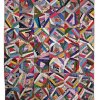
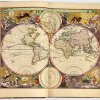
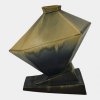






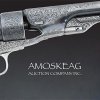



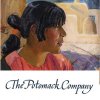

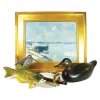

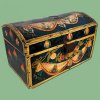
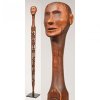











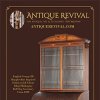

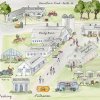
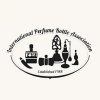


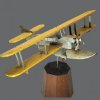

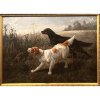






 Sturtevant J. Hamblen painted portraits from Maine to Massachusetts in the mid-19th century and was lumped with a few other artists into the Prior-Hamblen school. Since collector David Krashes wrote Understanding the Prior-Hamblen School of Artists a Little Bit Better for this magazine in July 2011, identifying his work has been a little easier. This 27" x 20" work drew much interest from bidders in the room and on phones. Jack O’Brien, in the gallery and on a phone with auctioneer and Americana specialist Leigh Keno, took the portrait for $252,000.
Sturtevant J. Hamblen painted portraits from Maine to Massachusetts in the mid-19th century and was lumped with a few other artists into the Prior-Hamblen school. Since collector David Krashes wrote Understanding the Prior-Hamblen School of Artists a Little Bit Better for this magazine in July 2011, identifying his work has been a little easier. This 27" x 20" work drew much interest from bidders in the room and on phones. Jack O’Brien, in the gallery and on a phone with auctioneer and Americana specialist Leigh Keno, took the portrait for $252,000.  This Neoclassical mahogany and bird’s-eye maple veneered work table or stand was made in Canada around 1815, and it’s only fitting that it went to a Canadian. Fred O’Riordan, an Ottawa resident, formerly a national advisor on Canadian tax services, now the Canadian leader on economics and analytical services at Ernst & Young, LLP, inspected the table at preview and later bought it for $27,600. He told us, “It’s related to a small group of sewing tables, four known, by Saint John, New Brunswick, cabinetmaker Thomas Nisbet. I’ve had an interest in him for a long time, for over thirty-five years of collecting, so I recognized it right away. One of these was offered at Sotheby’s in 2000 as an American table, so I called Leslie Keno and told him it was a Nisbet piece. They changed the attribution at the sale. I went down and bid on it, but it went way over estimate when offered as by Nisbet, over $20,000 I think [$25,875 with premium]. If I’d shut my mouth and said nothing it probably would have brought around $7000 or so. So when this one came up I said to myself I’m not going to lose out again. One of these is in the Royal Ontario Museum in Toronto and is illustrated as plate 407 in Montgomery’s American Furniture: The Federal Period,” O’Riordan told us. That table is described as possibly by Duncan Phyfe in that book. “It isn’t unusual for these to be mistaken for American Federal pieces,” O’Riordan said. “These pieces came down from Canada and often were misrepresented as Boston pieces, sometimes to the point where a seller would remove a Nisbet label in the hope it would bring a bigger price as an American piece.” Fred O’Riordan is a very happy buyer.
This Neoclassical mahogany and bird’s-eye maple veneered work table or stand was made in Canada around 1815, and it’s only fitting that it went to a Canadian. Fred O’Riordan, an Ottawa resident, formerly a national advisor on Canadian tax services, now the Canadian leader on economics and analytical services at Ernst & Young, LLP, inspected the table at preview and later bought it for $27,600. He told us, “It’s related to a small group of sewing tables, four known, by Saint John, New Brunswick, cabinetmaker Thomas Nisbet. I’ve had an interest in him for a long time, for over thirty-five years of collecting, so I recognized it right away. One of these was offered at Sotheby’s in 2000 as an American table, so I called Leslie Keno and told him it was a Nisbet piece. They changed the attribution at the sale. I went down and bid on it, but it went way over estimate when offered as by Nisbet, over $20,000 I think [$25,875 with premium]. If I’d shut my mouth and said nothing it probably would have brought around $7000 or so. So when this one came up I said to myself I’m not going to lose out again. One of these is in the Royal Ontario Museum in Toronto and is illustrated as plate 407 in Montgomery’s American Furniture: The Federal Period,” O’Riordan told us. That table is described as possibly by Duncan Phyfe in that book. “It isn’t unusual for these to be mistaken for American Federal pieces,” O’Riordan said. “These pieces came down from Canada and often were misrepresented as Boston pieces, sometimes to the point where a seller would remove a Nisbet label in the hope it would bring a bigger price as an American piece.” Fred O’Riordan is a very happy buyer. The cherry chest-on-chest was probably made in Granby, Connecticut, and is identical to one illustrated on page 348 in Connecticut Valley Furniture (2005), one of a pair made for Hannah Forwood and Horace Clark at their marriage in 1802. That piece is now in the Garvan collection at Yale. A phone bidder paid $48,000 to own this example.
The cherry chest-on-chest was probably made in Granby, Connecticut, and is identical to one illustrated on page 348 in Connecticut Valley Furniture (2005), one of a pair made for Hannah Forwood and Horace Clark at their marriage in 1802. That piece is now in the Garvan collection at Yale. A phone bidder paid $48,000 to own this example.  Craig Prickett waited patiently for the few pieces he wanted and succeeded in getting them. One of his purchases was this mahogany tall-case clock made by Boston’s William Claggett. Early in its history the clock belonged to the chief justice of the Massachusetts Supreme Court, William Cushing, who served on the U.S. Supreme Court from 1790 to 1810. The clock cost Prickett $36,000.
Craig Prickett waited patiently for the few pieces he wanted and succeeded in getting them. One of his purchases was this mahogany tall-case clock made by Boston’s William Claggett. Early in its history the clock belonged to the chief justice of the Massachusetts Supreme Court, William Cushing, who served on the U.S. Supreme Court from 1790 to 1810. The clock cost Prickett $36,000.

